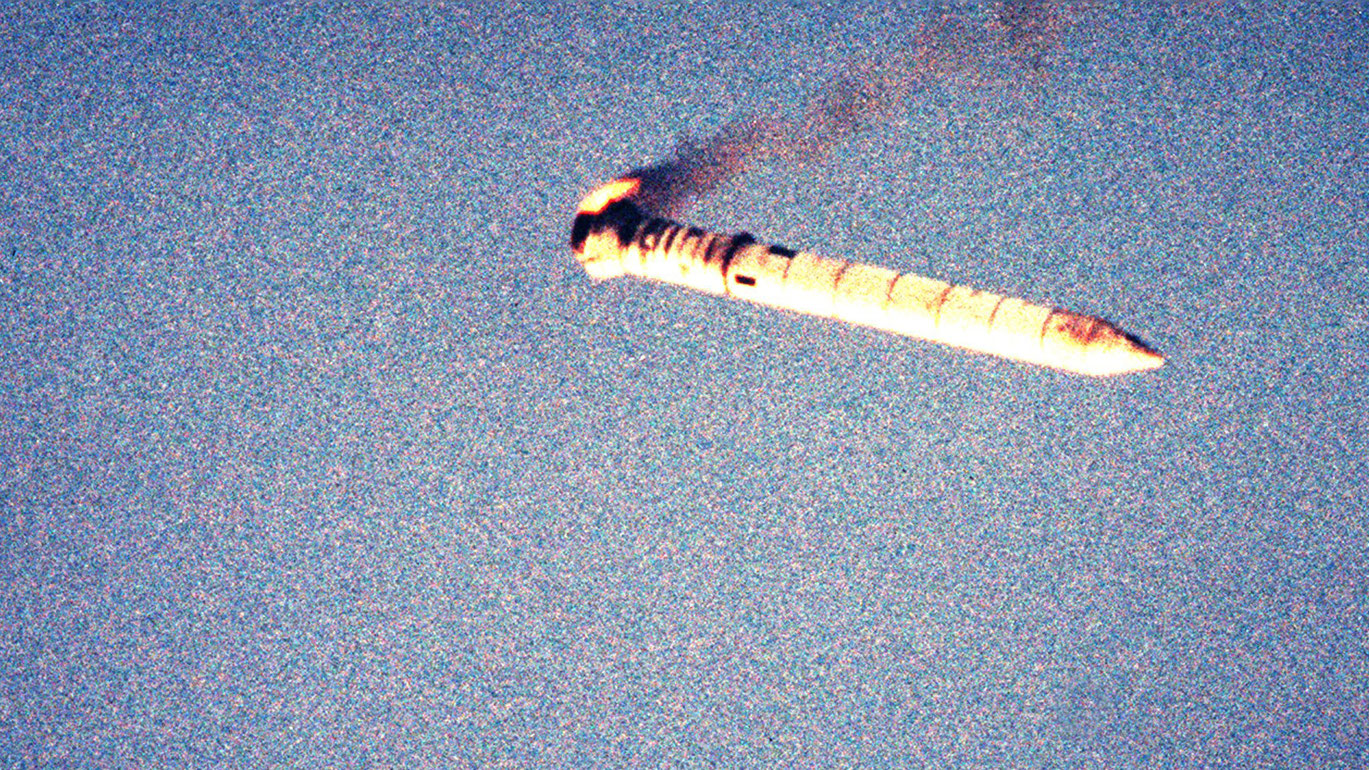Endeavour
Johann Lurf´s film Endeavour slides between documentary, avant-garde film, and science-fiction. This highly singular combination of materials and techniques gives the viewer of Endeavour a feeling of flight, as the film continually evades the gravity of genres and definitive definitions. Lurf uses NASA footage from a day and a night launch of the space-shuttle that follows the booster rockets from take-off to splashdown. Each launch is filmed by six cameras, one each at the bottom, middle and top of the two booster rockets. Lurf takes this simultaneously shot footage and edits it consecutively, cutting from one camera to the next every nine frames, giving us about three cuts a second. The complete soundtrack of the day launch is used, with the noise of each rocket isolated on the left and right channels, while the night launch is silent, resulting in a strange "phantom" soundtrack composed by the viewer from the echoes of the first launch. The strict formal structure of the film – a structure taken from the original material – results in its uncanny and hallucinatory effect, where documentary transforms into avant-garde cinema. Here Lurf intervenes on time itself, which is no longer in synch with the footage, but now appears for itself in the rhythm of the cut, a circular dance taking six steps around before taking one forward.
Similarly, Endeavour obviously evokes science-fiction, but the editing of its brutally short narrative stretches it into a jagged and violent ride, a world away from the soft floating aesthetics and human adventure usually associated with Hollywood space films. As a result, Lurf achieves a kind of sublime structuralism by using the structure of the original footage against itself, fragmenting and accelerating it, and so creating an intense and overwhelming experience in which time, truth and finally our own point of view become confused and shattered. But through this experience something else emerges, an hallucinatory and pulsing perception set free from consciousness, and so, perhaps, capable of exploring the cosmos.
(Stephen Zepke)
Endeavour was made using NASA footage recorded by several cameras attached to the space shuttle booster rockets. The film tracks the path of the rockets from their launch to their flight into outer space and their eventual descent into the ocean, cutting rhythmically from one camera to the next to show the process from multiple angles. The footage is from one day launch and one night launch, the former accompanied by tension-filled background noise that is synchronized with the video and beats out a steady rhythm, the latter accompanied by silence, which upsets the viewer´s sense of equilibrium and, when combined with the flashes that burst like fireworks in pitch-darkness of space, fosters a meditative, trip-like sensation. LURF´s skillful editing transforms the flight of the boosters, something impossible to experience with the naked eye, into a visual journey full of both the detachment peculiar to experimental films and the romanticism of science fiction movies.
(Keiko Okamura, How Physical - Yebisu International Festival for Art & Alternative Vision, Metropolitan Museum of Photography Tokyo)
We were most fascinated by the film Endeavour which regularly combines the scenes from six cameras placed in a space shuttle. The resulting film is similar to the functioning of the human brain which also interconnects the functioning of the left and right hemisphere into a single whole. Although the film was made by a machine and shows primarily the machine, it is most telling of mankind as such. At the beginning, the spectator watches the camera images, however, the regular rhythm of image and sound provides space for reflection.
(Jury statement for the Best Experimantal Documentary, Jihlava International Documentary Film Festival)
Endeavour
2010
Austria
16 min

